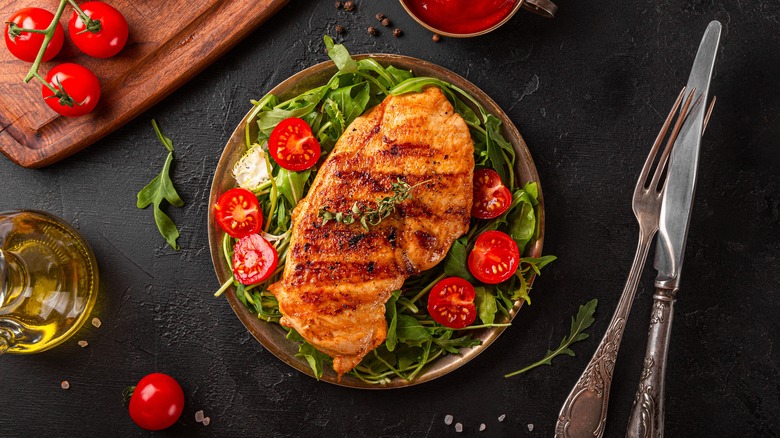Why It Can Be Risky To Only Saute Chicken Breasts
We may receive a commission on purchases made from links.
While a well-cooked chicken breast can truly shine on top of a salad or tucked into a casserole, it also lends itself to many potential mistakes. Cook it too long, and you're left with a dry, stringy meal. Cook it insufficiently, and you've bought yourself a ticket to Stomach Bug City. To avoid these problems, there are some pointers to keep in mind. For instance, you should use a meat thermometer like this one from ThermoPro to make sure the meat is done. Another crucial tip: Avoid sautéing chicken breast if that's the only cooking method you plan on using.
Generally, chicken breasts are uneven in shape and size, with one end being thicker than the other. As a result, sautéing can lead to a piece of chicken that's cooked on one side and par-cooked on the other. Instead, cook your chicken using a simple, two-part process: sauté first in a skillet, then finish it off in the oven at a low temp.
A two-part process
While not ideal on its own, sautéing is a great start when it comes to chicken breast: Sizzling the piece of protein over a generous pat of butter or splash of good olive oil can create a great sear with interesting texture and flavor. It'll easily set your chicken apart from the limp, rubbery stuff you'd eat on an airplane.
In the first phase of the two-step cooking method, sauté your chicken breast over medium-high heat for three to four minutes per side. You're not looking to cook the whole piece of poultry during this stage — instead, you're aiming to achieve a crispy, golden crust. To encourage browning, pat your chicken dry before applying any heat. Once your chicken breast is browned, let it finish cooking in the oven at 350 degrees Fahrenheit, which can take anywhere from 20 to 30 minutes. This is where your internal thermometer comes in handy: Once the thickest part of your chicken breast has reached a temperature of 165 degrees Fahrenheit, it's adequately cooked and safe to eat, according to USDA guidelines.
We'd be remiss if we didn't tell you to spice things up a little. Before sautéing your chicken, let it steep in a simple-but-genius marinade of white wine, fresh lemon, salt, pepper, and oil. Or, try coating your chicken in a blend of warm spices, such as McCormick's Culinary Southwest Seasoning. Once you master the 2-step method, you'll feel pretty compelled to try it with every variation possible.

